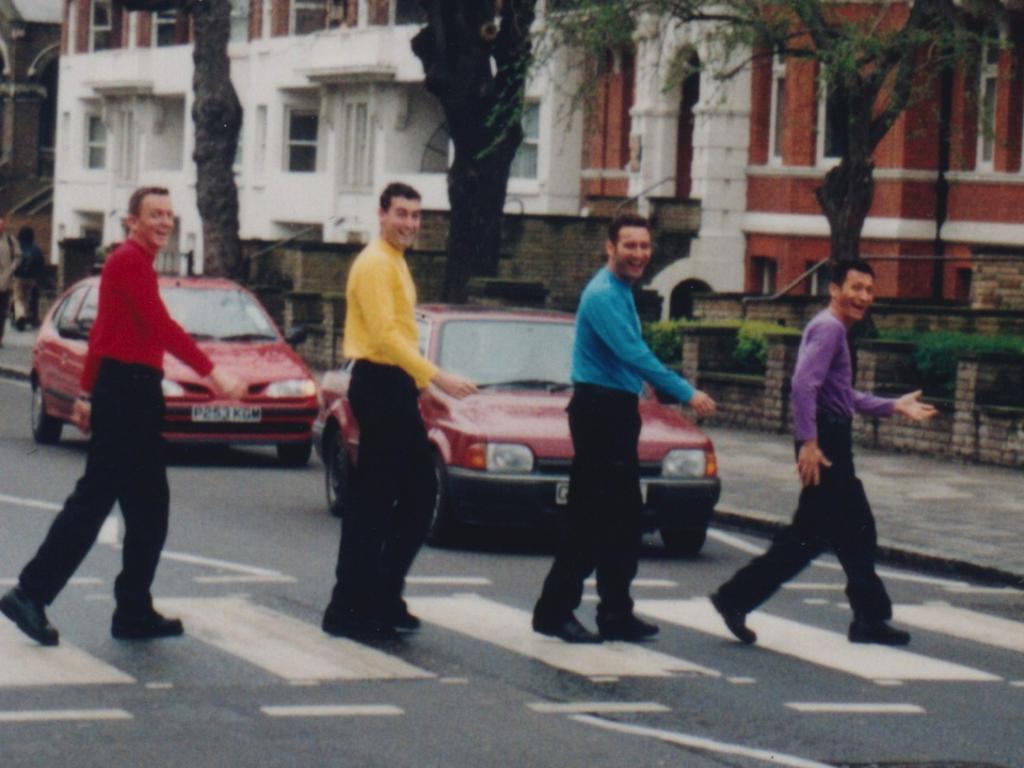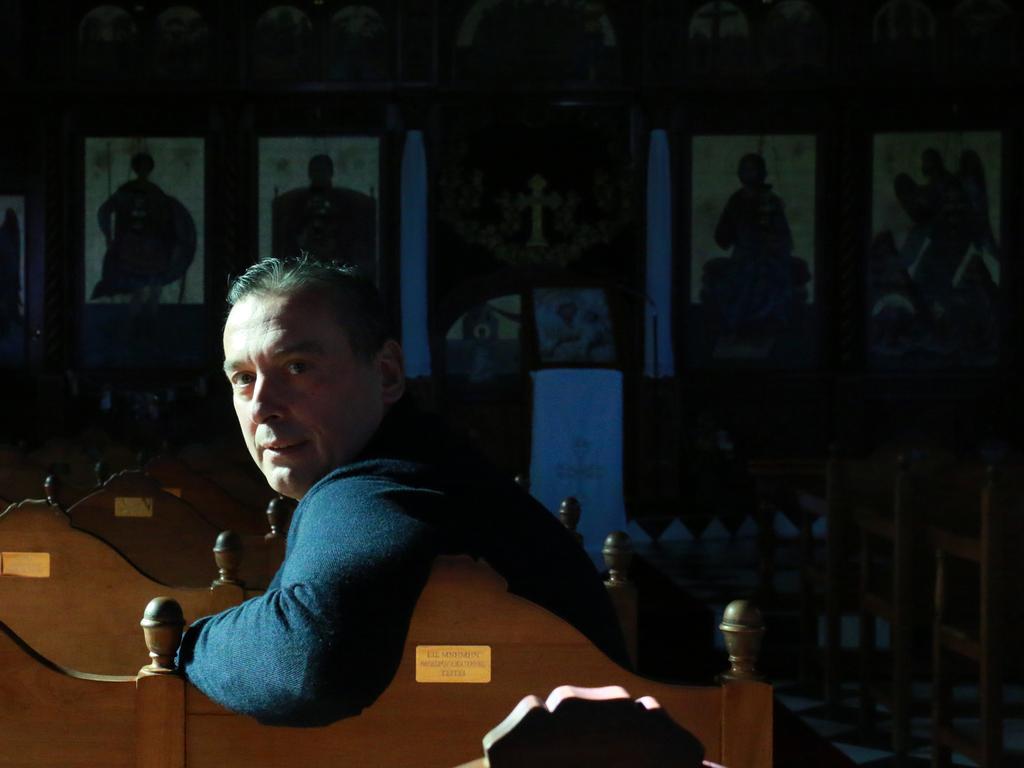Bring Him to Me prods psychological side of criminal underbelly
Bring Him to Me opens with a driver receiving a text message from the mob boss. “The kid has f--ked us. Drive him here. We’ll do the rest.” Problem is, the kid has a three-year-old daughter.

Bring Him To Me (MA15+)
In cinemas
★★★½
Have you ever watched one scene in a film and thought a separate movie could be made out of it? There are the famous last words, of course, such as “Frankly my dear, I don’t give a damn” and “Louis, I think this is the beginning of a beautiful friendship” but there is no sequel to Gone with the Wind (1939) or Casablanca (1942).
I’m going to cheat and invent one. What if, in Saturday Night Fever (1977), the first time John Travolta hits the dance floor he dances like Elaine in Seinfeld (season eight, episode 4, The Little Kicks). That would be a whole different movie.
This idea, silly as it may seem, came to mind as I sat down to watch the Australian thriller Bring Him To Me, which was filmed in Queensland but is set somewhere in the crime-ridden, ask-no-questions US.
It’s directed by Australian filmmaker Luke Sparke (the 2018 sci-fi thriller Occupation and its 2020 sequel Occupation: Rainfall) and written by English screenwriter Tom Evans. The inspiration for this 90-minute movie is a two-and-a-half minute scene in Martin Scorsese’s Casino (1995) in which mobster Nicky Santora (Joe Pesci) is driven into a cornfield. Spoiler alert: it does not end well.
Bring Him To Me is an impressive drama that prods the psychological side of the criminal underbelly. It takes risks with the characters themselves and with what happens to them. The director does not take the easy way out.
And the US-setting leads to the highlight performances: Rachel Griffiths as the mob boss, speaking like she’s just walked off the set of The Sopranos, and Sam Neill as a psychotic money launderer. I don’t know if their American accents are good or bad but I do know that they are a lot of fun to watch.
The story unfolds in two intimately, violently linked time frames. It opens with the driver (Canadian-American actor Barry Pepper) receiving a text message from the boss (Griffiths). “The kid has f--ked us. Drive him here. We’ll do the rest.”
The kid (American actor Jamie Costa) is a criminal newbie who believes he’s being driven to the boss to receive his cut from a recent armed robbery. When the driver arrives, the kid is holding hands with his three-year-old daughter. The driver, we know from a photograph he keeps in the glove box, has a teenage son.
A flashback to the second time frame shows that armed robbery. The kid and a more senior gangster are taking down the money launderer (Neill). “No one has ever tried stealing from me and lived long enough to accept a dime,’’ he warns them.
Fast forward to the drive. The kid is chatty and the driver starts to listen to him. They form some kind of bond that makes the driver rethink the job he’s been asked to do. The boss warns him that if he turns up empty-handed, he will wish that he was dead.
For a good while, the plot alternates between the drive to the boss and the robbery. Once we know how the robbery went down, it moves onto the drive and the pursuit, first by the money launderer and then by others.
One of the best scenes is a confrontation: the driver and the kid versus the money launderer and his adult son. When the money launderer learns his son is a Judas, this is what he has to say, spittle running through his beard: “We kill these f--ks and then we TALK.” It’s a great role for Neill.
A lot of this movie happens inside a black Chevrolet coupe and it is well filmed and well-acted in this confined space. I thought of Steven Spielberg’s Duel (1971) and Tom Hardy’s outstanding single-hander in Locke (2013). Bring Him to Me, Sparke’s fourth movie, marks him a filmmaker to watch.
Mad About the Boy (M)
In cinemas as part of the British Film Festival, britishfilmfestival.com.au
★★★½
Noel Coward was the chameleon’s chameleon. The boy from a working-class family in Teddington, a southwestern suburb of London, became, by age 30, the highest paid writer in the world. He bought himself a Rolls Royce but still lived with his beloved mother.
He went from leaving school at nine to the cover of Time magazine for being, in public and on the stage and screen, three things he was not: upper class, educated and heterosexual.
“He is his own greatest creation,’’ says the Scottish actor Alan Cumming, who narrates Mad About The Boy, a thoroughly researched and highly entertaining documentary about Coward (1899-1973).
Coward is voiced by two people: the English actor Rupert Everett, who draws on Coward’s books and letters, and the man himself, through archival interviews and his home movies, some of which have not been aired before.
Both voices are a pleasure to listen to, but it’s the real Coward who is the highlight of this 92-minute movie written and directed by English filmmaker Barnaby Thompson, who, in a different life, produced the Mike Myers comedy Wayne’s World (1992).
The central tension is within Coward himself. It’s about how a boy who left school and became a child actor to help support the family moved onto fame and fortune without ever being himself. Asked in a television interview when he knew he was going to be a star, Coward, with a half-smile, says, “Two.” That singular self-confidence is real. Yet asked to define talent, he says, only half in jest, “Box office.”
So it is when he suffers a career slump and is in debt he, at age 54, relocates to Las Vegas and performs cabaret in casinos. Frank Sinatra, in the audience, tells the media Coward “is better than anyone else I’ve ever seen and could even give me lessons”.
Coward’s own take, pre-Vegas, is: “I suppose this succession of failures is good for my soul, but I rather doubt it.”
He did fall from a height. This documentary charts his success as a writer, director, actor and singer-songwriter. The title is a riff on About a Boy, one of his songs. It’s a love song to an unnamed Hollywood star, perhaps Douglas Fairbanks Jr.
As a playwright, he takes off with The Vortex (1923), a “drawing room comedy on speed”, as Cummings puts it, and continues with plays now considered classics such as Private Lives (1929) and Blithe Spirit (1941).
In film he was a mentor of lesser known names such as Laurence Olivier and David Lean. His rationale for casting 22-year-old Olivier in Private Lives is characteristic Coward: “You’re very attractive and I need a bit of competition.”
Olivier’s thoughts on Coward are fascinating, given who the actor became. “Noel was the first person who took hold of me and made me think. He made me use my silly little brain.”
The interviews with the now-famous names who worked with Coward are a drawcard. They include Olivier, Lean, David Niven, John Mills and Lord Mountbatten (Coward and Lean made the 1942 war film In Which We Serve).
Coward’s visit to Australia is covered as is his war time stint in the espionage services. Being a celebrity is the perfect cover for a spy, he says, “as everyone thought I was a silly ass”. He meets US President Franklin Roosevelt during this mission.
When Ian Fleming, Coward’s neighbour in Jamaica, the second home where the writer is close to being his real self, asks him to play the main villain in Dr No (1962). Coward’s response, by telegram, is hilarious.
The home movies from Jamaica are also a treat, as a cavalcade of stars, including Dr No star Sean Connery, come to wine, dine and swim with “The Master”.
Coward went from working class to the epitome of style and sophistication. His sexuality, though, remained hidden. Asked late in his life why he refused to come out, he says, “There are still a few old ladies in Worthing who don’t know.”
The final invention, from uneducated to the highest paid writer in the world came through a means that still should be recommended to every child, no matter what their circumstances. Asked how he did this, he says, “I read and read and read, everything I could lay my hands on.”






To join the conversation, please log in. Don't have an account? Register
Join the conversation, you are commenting as Logout